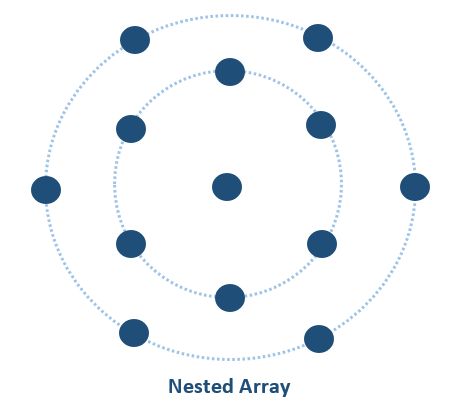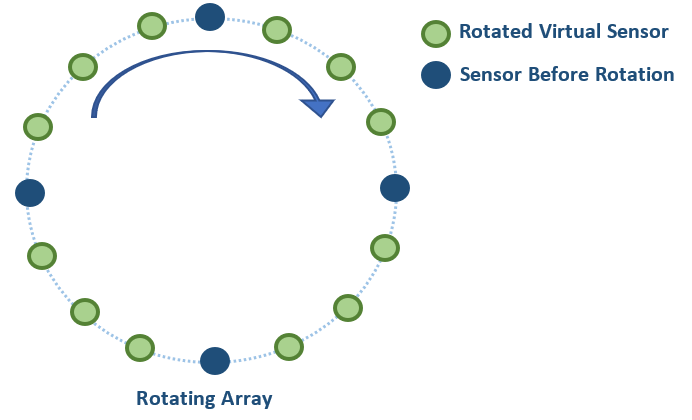Rotating arrays for wideband beamforming are a potential solution to the frequency variant beamwidth problem. The ideal spacing of sensors for beamforming is half the wavelength of the target frequency. In acoustics, the signal of interest can range from 200 Hz to 8000 Hz, which corresponds to an ideal spacing of 0.85m, and 0.0021m, respectively. To help combat this problem, uniform arrays can be replaced with nested arrays with large sensor counts, where a subarray can be selected for a given bandwidth. However, the large sensor count significantly increases hardware costs. Rotating arrays can help solve this problem. The rotating array can sense the signal at greater number locations than there are sensors. In other words, it creates virtual microphones.
The assumption required for rotating arrays to work in the real world is that the sound source (or signal source) is stationary during the rotation of the array. Rotating arrays are practical for many acoustic imaging and sound source localization applications, but impractical speech and conferencing applications. It does add a bit of complexity to the beamforming algorithm as the rotation speed and the sampling frequency has to be compensated for appropriately, but the problem is deterministic. In addition, rotating arrays are useful for solving undetermined problems where the number of sources is greater than the number of real sensors.

